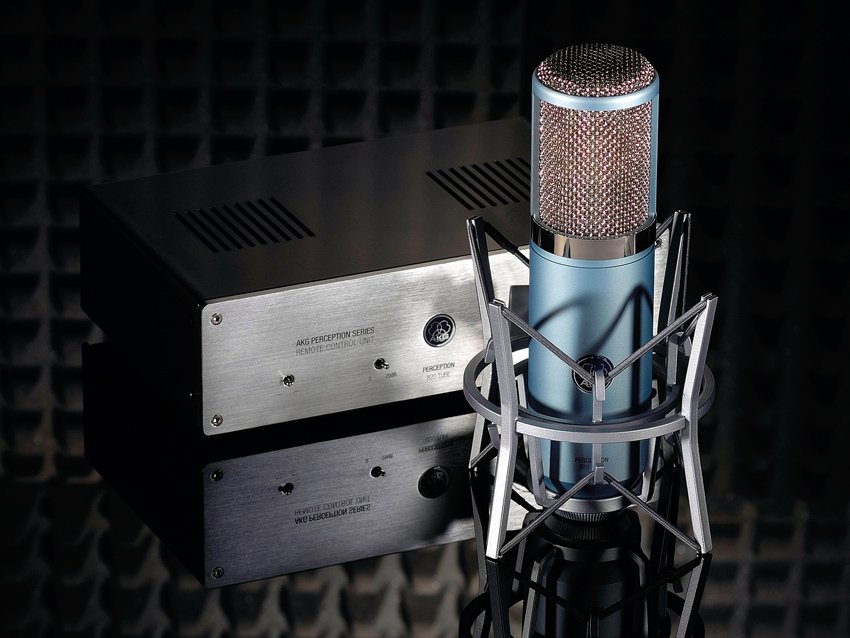MusicRadar Verdict
A great way to get your hands on a tube mic from a respected brand at an affordable price.
Pros
- +
Nine polar patterns. Warm, smooth tube sound. Very attractively designed.
Cons
- -
Where do you put the remote control?
MusicRadar's got your back
AKG's Perception range, which was launched in 2005 and includes the sub-£100 Perception 120, has just gained a new flagship model in the form of the 820. The two standout features are that the microphone has a tube design and that its polar patterns and other tweakable controls are located onboard a separate remote control unit.
Starting with the microphone itself, the internal design features dual 'back to back' 1-inch diaphragm capsules which combine with ECC 83 dual-triode tube circuitry to deliver the 820's warm tube sound.
The architecture is designed to enhance even-order harmonics which in turn form the backbone of a tube microphone's distinctive sound. The actual microphone has no on-body controls as, once it is connected to its control unit via the supplied seven-pin power/microphone cord, all setup is controlled from there.
The remote control unit itself is cast in classy silver and looks like a scaled-down high-end hi-fi amplifier, with a pleasingly minimalist front panel.
The prominent central dial here is used to control the microphone's polar pattern and nine detented positions are available, from omni-directional mode at the 7 o'clock position, through cardioid at noon, through to figure-of-eight at 5 o'clock, with intermediate positions available between these poles.
The other controls on the front panel include a -20dB pad switch and a bass roll off option which provides 12dB per octave high-pass filtering below 80Hz. As far as actually feeding the signal from the remote control unit to your audio interface or mic preamp of choice is concerned, a regular XLR cable is required, though you'll have to provide this yourself.
You'll also find a ground lift button on the back panel which will help eradicate hum if this is something from which your studio suffers.
Want all the hottest music and gear news, reviews, deals, features and more, direct to your inbox? Sign up here.
Sound
While it's possibly almost too much of a cliché to use the word 'warmth' to describe a tube microphone, there's no other word to do the job better and it's certainly a quality the 820 oozes, with an immediately familiar comfortably smooth sound.
Don't be fooled into thinking that the sound it produces is falsely coloured or in some way 'too smooth'; what this mic does do is to provide a richness of sound, which is a lovely option to have up your sleeve in the studio. The nine polar positions provide plenty of choice and you'll find what you need to get a great sound almost regardless of the source you're looking to record.
This is a great sounding microphone that breaks the mould of the rest of AKG's Perception range. It's over twice as expensive as the previous top-end model, which is to be expected given the presence of the tube technology.
The only dilemma is where to put the remote control bearing in mind its bespoke connector - in the vocal booth with the artist, or in front of you and your DAW? It's a nice dilemma to have - this is a very good mic.
Future Music is the number one magazine for today's producers. Packed with technique and technology we'll help you make great new music. All-access artist interviews, in-depth gear reviews, essential production tutorials and much more. Every marvellous monthly edition features reliable reviews of the latest and greatest hardware and software technology and techniques, unparalleled advice, in-depth interviews, sensational free samples and so much more to improve the experience and outcome of your music-making.

